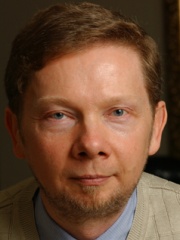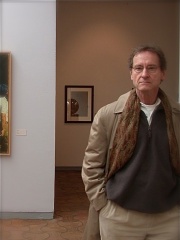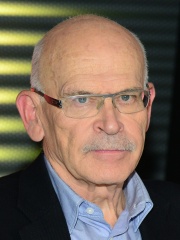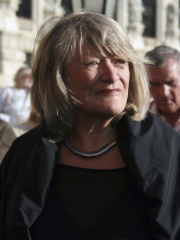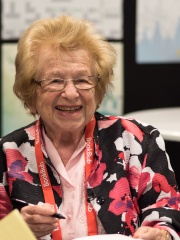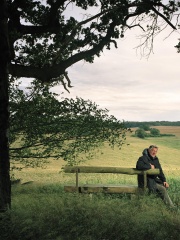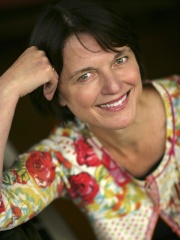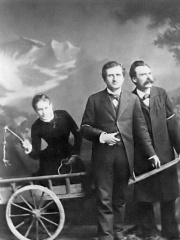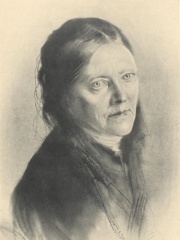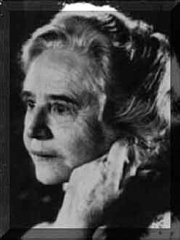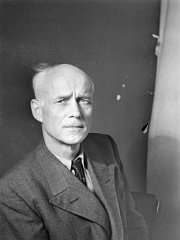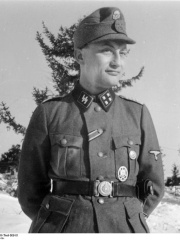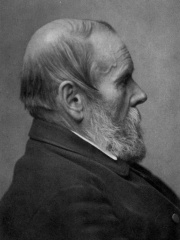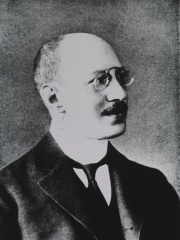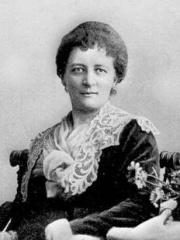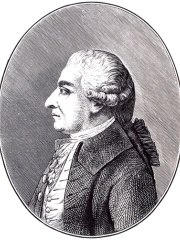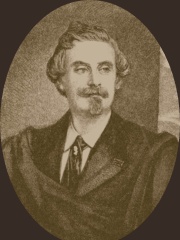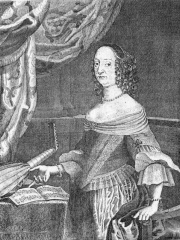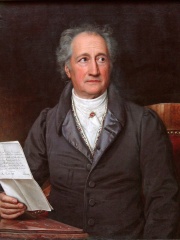
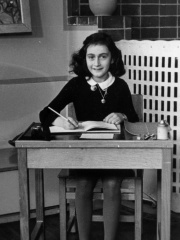
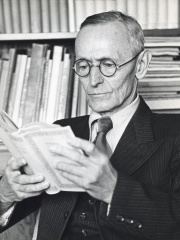
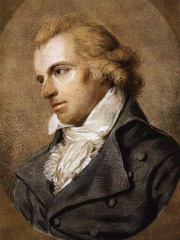
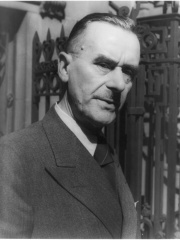
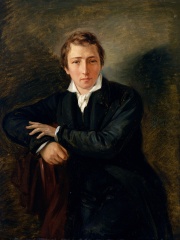
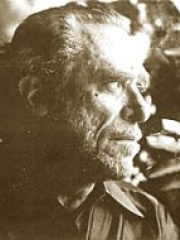
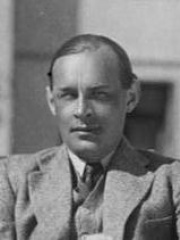
The Most Famous
WRITERS from Germany
This page contains a list of the greatest German Writers. The pantheon dataset contains 5,755 Writers, 343 of which were born in Germany. This makes Germany the birth place of the 4th most number of Writers behind United Kingdom and France.
Top 10
The following people are considered by Pantheon to be the top 10 most legendary German Writers of all time. This list of famous German Writers is sorted by HPI (Historical Popularity Index), a metric that aggregates information on a biography’s online popularity. Visit the rankings page to view the entire list of German Writers.

1. Johann Wolfgang von Goethe (1749 - 1832)
With an HPI of 88.78, Johann Wolfgang von Goethe is the most famous German Writer. His biography has been translated into 179 different languages on wikipedia.
Johann Wolfgang von Goethe (28 August 1749 – 22 March 1832) was a German polymath and writer, who is widely regarded as the greatest and most influential writer in the German language. His work has had a profound and wide-ranging influence on Western literary, political, and philosophical thought from the late 18th century to the present day. Goethe was a German poet, playwright, novelist, scientist, statesman, theatre director, and critic. His works include plays, poetry and aesthetic criticism, as well as treatises on botany, anatomy, and color. Goethe took up residence in Weimar in November 1775 following the success of his first novel, The Sorrows of Young Werther (1774). He was ennobled by the Duke of Saxe-Weimar, Karl August, in 1782. Goethe was an early participant in the Sturm und Drang literary movement. During his first ten years in Weimar, Goethe became a member of the Duke's privy council (1776–1785), sat on the war and highway commissions, oversaw the reopening of silver mines in nearby Ilmenau, and implemented a series of administrative reforms at the University of Jena. He also contributed to the planning of Weimar's botanical park and the rebuilding of its Ducal Palace. Goethe's first major scientific work, the Metamorphosis of Plants, was published after he returned from a 1788 tour of Italy. In 1791 he was made managing director of the theatre at Weimar, and in 1794 he began a friendship with the dramatist, historian, and philosopher Friedrich Schiller, whose plays he premiered until Schiller's death in 1805. During this period Goethe published his second novel, Wilhelm Meister's Apprenticeship; the verse epic Hermann and Dorothea, and, in 1808, the first part of his most celebrated drama, Faust. His conversations and various shared undertakings throughout the 1790s with Schiller, Johann Gottlieb Fichte, Johann Gottfried Herder, Alexander von Humboldt, Wilhelm von Humboldt, and August and Friedrich Schlegel have come to be collectively termed Weimar Classicism. The German philosopher Arthur Schopenhauer named Wilhelm Meister's Apprenticeship one of the four greatest novels ever written, while the American philosopher and essayist Ralph Waldo Emerson selected Goethe as one of six "representative men" in his work of the same name (along with Plato, Emanuel Swedenborg, Montaigne, Napoleon, and Shakespeare). Goethe's comments and observations form the basis of several biographical works, notably Johann Peter Eckermann's Conversations with Goethe (1836). His poems were set to music by many composers including Mozart, Beethoven, Schubert, Berlioz, Liszt, Wagner, and Mahler.

2. Anne Frank (1929 - 1945)
With an HPI of 83.42, Anne Frank is the 2nd most famous German Writer. Her biography has been translated into 119 different languages.
Annelies Marie Frank (German: [ˈanə(liːs maˈʁiː) ˈfʁaŋk] , Dutch: [ˌɑnəˈlis maːˈri ˈfrɑŋk, ˈɑnə ˈfrɑŋk] ; 12 June 1929 – c. February or March 1945) was a German-born Jewish girl who kept a diary in which she documented life in hiding under Nazi persecution during the German occupation of the Netherlands. She is a celebrated diarist who described everyday life from her family hiding place in an Amsterdam attic. One of the most-discussed Jewish victims of the Holocaust, she gained fame posthumously with the 1947 publication of The Diary of a Young Girl (originally Het Achterhuis in Dutch, lit. 'the back house'; English: The Secret Annex), in which she documents her life in hiding from 1942 to 1944 — it is one of the world's best-known books and has been the basis for several plays and films. Frank was born in Frankfurt, Germany, in 1929. In 1934, when she was four-and-a-half, she and her family moved to Amsterdam, Netherlands, after Adolf Hitler and the Nazi Party gained control over Germany. She spent most of her life in or around Amsterdam. By May 1940, the Franks were trapped in Amsterdam by the German occupation of the Netherlands. Anne lost her German citizenship in 1941 and became stateless. Despite spending most of her life in the Netherlands and being a de facto Dutch national, she never officially became a Dutch citizen. As persecutions of the Jewish population increased in July 1942, they went into hiding in concealed rooms behind a bookcase in the building where Anne's father, Otto Frank, worked. The hiding place is notably referred to as the "secret annex". Until the family's arrest by the Gestapo on 4 August 1944, Frank kept and regularly wrote in a diary she had received as a birthday present in 1942. Following their arrest, the Franks were transported to concentration camps. On 1 November 1944, Frank and her sister, Margot, were transferred from Auschwitz to Bergen-Belsen concentration camp, where they died (presumably of typhus) a few months later. They were estimated by the Red Cross to have died in March, with Dutch authorities setting 31 March as the official date. Later research has alternatively suggested that they may have died in February or early March. Otto, the only survivor of the Frank family, returned to Amsterdam after the war to find that Anne's diary had been saved by his female secretaries, Miep Gies and Bep Voskuijl. He decided to fulfil his daughter's greatest wish to become a writer. He published her diary in 1947. It was translated from its original Dutch version and first published in English in 1952 as The Diary of a Young Girl, and has since been translated into over 70 languages.

3. Hermann Hesse (1877 - 1962)
With an HPI of 81.43, Hermann Hesse is the 3rd most famous German Writer. His biography has been translated into 108 different languages.
Hermann Karl Hesse (German: [ˈhɛʁman ˈhɛsə] ; 2 July 1877 – 9 August 1962) was a German-Swiss poet, novelist, and painter. His best-known works include Demian, Steppenwolf, Siddhartha, and The Glass Bead Game, each of which explores an individual's search for authenticity, self-knowledge, and spirituality. In 1946, he received the Nobel Prize in Literature.

4. Friedrich Schiller (1759 - 1805)
With an HPI of 81.34, Friedrich Schiller is the 4th most famous German Writer. His biography has been translated into 108 different languages.
Johann Christoph Friedrich von Schiller (German: [ˈjoːhan ˈkʁɪstɔf ˈfʁiːdʁɪç fɔn ˈʃɪlɐ], short: [ˈfʁiːdʁɪç ˈʃɪlɐ] ; 10 November 1759 – 9 May 1805) was a German polymath and poet, playwright, historian, philosopher, physician, lawyer. Schiller is considered by most Germans to be Germany's most important classical playwright. He was born in Marbach to a devoutly Protestant family. Initially intended for the priesthood, in 1773 he entered a military academy in Stuttgart and ended up studying medicine. His first play, The Robbers, was written at this time and proved very successful. After a brief stint as a regimental doctor, he left Stuttgart and eventually wound up in Weimar. In 1789, he became professor of History and Philosophy at Jena, where he wrote historical works. During the last seventeen years of his life (1788–1805), Schiller developed a productive, if complicated, friendship with the already famous and influential Johann Wolfgang von Goethe. They frequently discussed issues concerning aesthetics, and Schiller encouraged Goethe to finish works that he had left as sketches. This relationship and these discussions led to a period now referred to as Weimar Classicism. Together they founded the Weimar Theater. They also worked together on Xenien, a collection of short satirical poems in which both Schiller and Goethe challenge opponents of their philosophical vision.
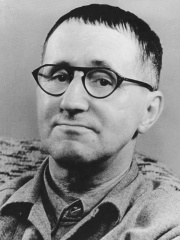
5. Bertolt Brecht (1898 - 1956)
With an HPI of 79.22, Bertolt Brecht is the 5th most famous German Writer. His biography has been translated into 101 different languages.
Eugen Berthold Friedrich Brecht (10 February 1898 – 14 August 1956), known professionally as Bertolt Brecht, was a German theatre practitioner, playwright, and poet. Coming of age during the Weimar Republic, he had his first successes as a playwright in Munich and moved to Berlin in 1924, where he wrote The Threepenny Opera with Elisabeth Hauptmann & Kurt Weill and began a life-long collaboration with the composer Hanns Eisler. Immersed in Marxist thought during this period, he wrote didactic Lehrstücke and became a leading theoretician of epic theatre (which he later preferred to call "dialectical theatre") and the Verfremdungseffekt. During the Nazi Germany period, Brecht fled his home country, first to Scandinavia, and during World War II to the United States, where he was surveilled by the FBI. After the war he was subpoenaed by the House Un-American Activities Committee. Returning to East Berlin after the war, he established the theatre company Berliner Ensemble with his wife and long-time collaborator, actress Helene Weigel.

6. Thomas Mann (1875 - 1955)
With an HPI of 79.06, Thomas Mann is the 6th most famous German Writer. His biography has been translated into 113 different languages.
Paul Thomas Mann (UK: MAN, US: MAHN; German pronunciation: [ˈtoːmas ˈman] ; 6 June 1875 – 12 August 1955) was a German novelist, short story writer, social critic, philanthropist, essayist, and the 1929 Nobel Prize in Literature laureate. His highly symbolic and ironic epic novels and novellas are noted for their insight into the psychology of the artist and the intellectual. His analysis and critique of the European and German soul used modernized versions of German and Biblical stories, as well as the ideas of Johann Wolfgang von Goethe, Friedrich Nietzsche, and Arthur Schopenhauer. Mann was a member of the Hanseatic Mann family and portrayed his family and class in his first novel, Buddenbrooks. His older brother was the radical writer Heinrich Mann and three of Mann's six children – Erika Mann, Klaus Mann and Golo Mann – also became significant German writers. When Adolf Hitler came to power in 1933, Mann fled to Switzerland. When World War II broke out in 1939, he moved to the United States, then returned to Switzerland in 1952. Mann is one of the best-known exponents of the so-called Exilliteratur, German literature written in exile by those who opposed the Hitler regime.

7. Heinrich Heine (1797 - 1856)
With an HPI of 77.71, Heinrich Heine is the 7th most famous German Writer. His biography has been translated into 89 different languages.
Christian Johann Heinrich Heine (German: [ˈhaɪnʁɪç ˈhaɪnə] ; born Harry Heine; 13 December 1797 – 17 February 1856) was a German poet, writer and literary critic. He is best known outside Germany for his early lyric poetry, which was set to music in the form of Lieder (art songs) by composers such as Robert Schumann and Franz Schubert. Heine's later verse and prose are distinguished by their satirical wit and irony. He is considered a member of the Young Germany movement. His radical political views led to many of his works being banned by German authorities—which, however, only added to his fame. He spent the last 25 years of his life as an expatriate in Paris.

8. Charles Bukowski (1920 - 1994)
With an HPI of 76.52, Charles Bukowski is the 8th most famous German Writer. His biography has been translated into 70 different languages.
Henry Charles Bukowski ( boo-KOW-skee; born Heinrich Karl Bukowski, German: [ˈhaɪnʁɪç ˈkaʁl buˈkɔfski]; August 16, 1920 – March 9, 1994) was an American poet, novelist, and short story writer. His writing was influenced by the social, cultural, and economic ambience of his adopted home city of Los Angeles. Bukowski's work addresses the ordinary lives of poor Americans, the act of writing, alcohol, relationships with women, and the drudgery of work. The FBI kept a file on him as a result of his column Notes of a Dirty Old Man in the LA underground newspaper Open City. Bukowski published extensively in small literary magazines and with small presses beginning in the early 1940s and continuing on through the early 1990s. He wrote thousands of poems, hundreds of short stories and six novels, eventually publishing over sixty books during the course of his career. Some of these works include his Poems Written Before Jumping Out of an 8 Story Window, published by his friend and fellow poet Charles Potts, and better-known works such as Burning in Water, Drowning in Flame. These poems and stories were later republished by John Martin's Black Sparrow Press (now HarperCollins/Ecco Press) as collected volumes of his work. As noted by one reviewer, "Bukowski continued to be, thanks to his antics and deliberate clownish performances, the king of the underground and the epitome of the littles in the ensuing decades, stressing his loyalty to those small press editors who had first championed his work and consolidating his presence in new ventures such as the New York Quarterly, Chiron Review, or Slipstream." In 1986, Time called Bukowski a "laureate of American lowlife". Regarding his enduring popular appeal, Adam Kirsch of The New Yorker wrote, "the secret of Bukowski's appeal ... [is that] he combines the confessional poet's promise of intimacy with the larger-than-life aplomb of a pulp-fiction hero." During his lifetime, Bukowski received little attention from academic critics in the United States, but was better received in Europe, particularly the UK, and especially Germany, where he was born. Since his death in March 1994, Bukowski has been the subject of a number of critical articles and books about both his life and writings.

9. Erich Maria Remarque (1898 - 1970)
With an HPI of 76.51, Erich Maria Remarque is the 9th most famous German Writer. His biography has been translated into 91 different languages.
Erich Maria Remarque (, German: [ˈeːʁɪç maˈʁiːa ʁəˈmaʁk] ; born Erich Paul Remark; 22 June 1898 – 25 September 1970) was a German-born novelist. His landmark novel All Quiet on the Western Front (1928), based on his experience in the Imperial German Army during World War I, was an international bestseller which created a new literary genre of veterans writing about conflict. The book was adapted to film several times. Remarque's anti-war themes led to his condemnation by Nazi propaganda minister Joseph Goebbels as "unpatriotic." He was able to use his literary success and fame, to relocate to Switzerland as refugee, and to the United States, where he became a Naturalized citizen.
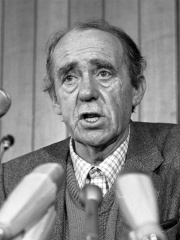
10. Heinrich Böll (1917 - 1985)
With an HPI of 73.92, Heinrich Böll is the 10th most famous German Writer. His biography has been translated into 93 different languages.
Heinrich Theodor Böll (German: [ˈhaɪnʁɪç ˈteːodoːɐ̯ ˈbœl] ; 21 December 1917 – 16 July 1985) was a German writer. Considered one of Germany's foremost post-World War II writers, Böll is a recipient of the Georg Büchner Prize (1967) and the Nobel Prize for Literature (1972).
Pantheon has 343 people classified as writers born between 405 and 1980. Of these 343, 45 (13.12%) of them are still alive today. The most famous living writers include Eckhart Tolle, Patrick Süskind, and Bernhard Schlink. The most famous deceased writers include Johann Wolfgang von Goethe, Anne Frank, and Hermann Hesse. As of April 2022, 36 new writers have been added to Pantheon including Paul Rée, Wilhelm Worringer, and Malwida von Meysenbug.
Living Writers
Go to all Rankings
Eckhart Tolle
1948 - Present
HPI: 71.02
Patrick Süskind
1949 - Present
HPI: 65.90
Bernhard Schlink
1944 - Present
HPI: 60.81
Udo Lindenberg
1946 - Present
HPI: 54.27
Günter Wallraff
1942 - Present
HPI: 54.13
Cornelia Funke
1958 - Present
HPI: 53.64
Alice Schwarzer
1942 - Present
HPI: 50.87
Ruth Westheimer
1928 - Present
HPI: 49.79
Botho Strauß
1944 - Present
HPI: 49.47
Sylvia Nasar
1947 - Present
HPI: 48.97
Uwe Timm
1940 - Present
HPI: 48.65
Angela Sommer-Bodenburg
1948 - Present
HPI: 48.22

Deceased Writers
Go to all Rankings
Johann Wolfgang von Goethe
1749 - 1832
HPI: 88.78
Anne Frank
1929 - 1945
HPI: 83.42
Hermann Hesse
1877 - 1962
HPI: 81.43
Friedrich Schiller
1759 - 1805
HPI: 81.34
Bertolt Brecht
1898 - 1956
HPI: 79.22
Thomas Mann
1875 - 1955
HPI: 79.06
Heinrich Heine
1797 - 1856
HPI: 77.71
Charles Bukowski
1920 - 1994
HPI: 76.52
Erich Maria Remarque
1898 - 1970
HPI: 76.51
Heinrich Böll
1917 - 1985
HPI: 73.92
Novalis
1772 - 1801
HPI: 73.65
Friedrich Hölderlin
1770 - 1843
HPI: 72.30

Newly Added Writers (2022)
Go to all Rankings
Paul Rée
1849 - 1901
HPI: 58.08
Wilhelm Worringer
1881 - 1965
HPI: 54.38
Malwida von Meysenbug
1816 - 1903
HPI: 52.53
Gertrud von Le Fort
1876 - 1971
HPI: 52.44
Theodor Plievier
1892 - 1955
HPI: 50.13
Gunter d'Alquen
1910 - 1998
HPI: 50.01
Friedrich Theodor Vischer
1807 - 1887
HPI: 49.81
Iwan Bloch
1872 - 1922
HPI: 49.06
Lily Braun
1865 - 1916
HPI: 48.25
Johann Beckmann
1739 - 1811
HPI: 47.88
Adolf Friedrich von Schack
1815 - 1894
HPI: 47.86
Duchess Elisabeth Sophie of Mecklenburg
1613 - 1676
HPI: 47.84

Which Writers were alive at the same time? This visualization shows the lifespans of the 25 most globally memorable Writers since 1700.

